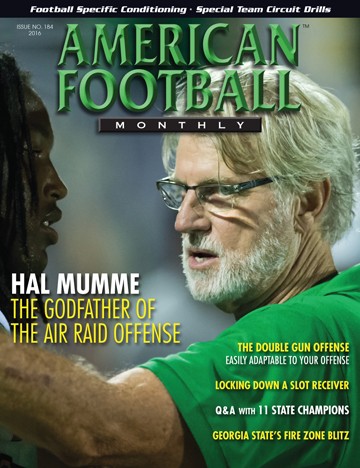Article CategoriesAFM Magazine
|
Locking Down a Slot Wide Receiverby: Clayton WhiteSafeties and Co-Special Teams Coach North Carolina State University © More from this issue Learning some techniques and progressions on covering a slot receiver will give you a foundation to improve your one-on-one match up in the slot. There are a variety of drills specifically for man-to-man technique that you can practice. Offensive coordinators are placing a premium on using spread systems. Therefore, the DB’s have to possess the skills to cover all types of players all over the field. Covering in the slot is a different facet of their craft and needs to be emphasized. Defensive coordinators can be limited when the safeties struggle covering in the slot. They still want to be aggressive by blitzing and disrupting offenses without changing personnel. We use four different techniques and drills that focus on the principles of being efficient in the slot as a defensive back.
|
|
|||||||
| HOME |
MAGAZINE |
SUBSCRIBE | ONLINE COLUMNISTS | COACHING VIDEOS |
Copyright 2026, AmericanFootballMonthly.com
All Rights Reserved





